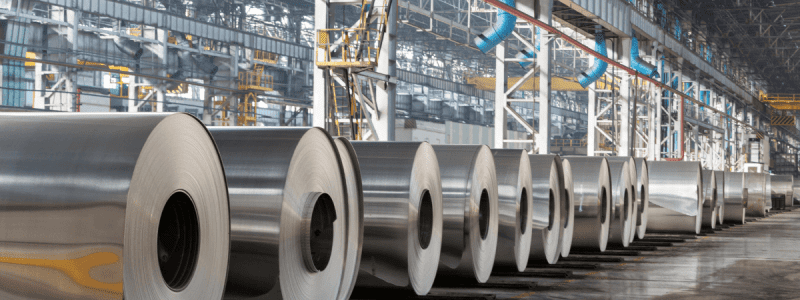
Ukrainian enterprises increased the consumption of metal by 9.99% in January-July of this year compared to the same period last year, to 2.54 million tonnes.
According to Ukrmetallurgprom association’s press release published on August 18, a total of 644,400 tonnes, or 25.4% of the domestic metal consumption market, were imported in the first seven months of the year.
“In January-July 2020, 2.54 million tonnes of rolled metal were delivered to domestic consumers, of which 644,400 tonnes, or 25.4%, were imported. During the same time in 2019, the home market capacity was 2.3 million tonnes, of which 826,700 tonnes, or 35.8%, were imported. For seven months of 2020, there was an increase in the domestic rolled metal market capacity compared to January-July 2019 by 10% with a simultaneous decrease in the share of the imported component by 10.4%,” the association said in the press release.
According to Ukrmetallurgprom, in January-July 2020, Ukrainian metal enterprises produced 10.65 million tonnes of rolled metal (96.9% compared to the same period in 2019), of which about 8.75 million tonnes or 82.2% were exported, according to information from ETR-Spectrum LLC.
The share of semi-finished products of export deliveries in January-July 2020 accounted for 49.31%, which noticeably exceeds the indicator for the period January-July 2019 (45.49%). The share of flat products of export deliveries in the first seven months of 2020 is slightly lower than in the same period in 2019 (32.71% and 33.92%, respectively). The share of long steel of export deliveries in January-July 2020 is significantly lower than in January-July 2019 (17.97% in 2020 against 20.6% in 2019).
The main export markets for Ukrainian metal products in January-July 2020, according to ETR-Spectrum LLC, were the countries of the European Union (28.4%), Africa (14.1%) and Asia (13.9%).
Among the metallurgical importers in January-July 2020, the CIS was at the first place (35.8%), the EU-28 was the second (25.4%), and the Asian countries third (20.1%).